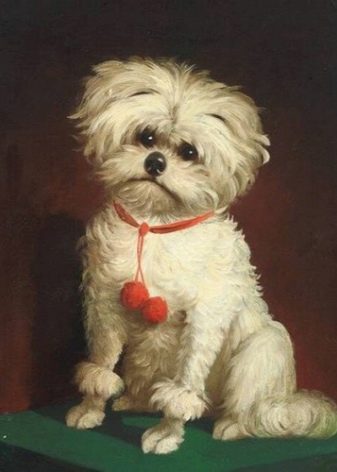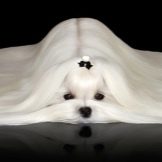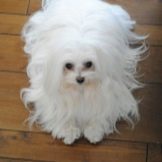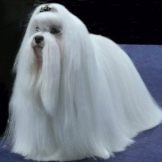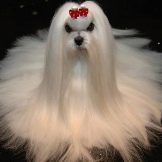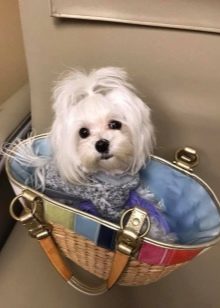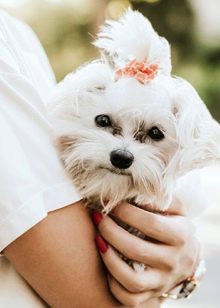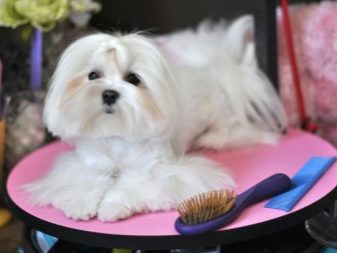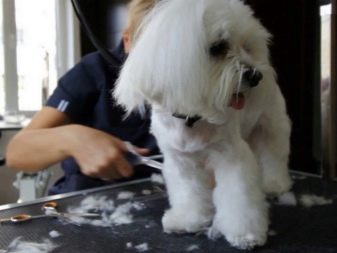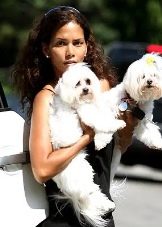Maltese lapdogs belong to companion dogs, which are briefly called Maltese. These are decorative doggies that are conveniently kept in apartments and taken with you wherever you go. This breed is often chosen by people from high society, it happened since ancient times.
When choosing any breed, it is worth exploring the characteristics of care and character of future pets in order to exist in comfort and mutual understanding.
Breed features
The first mention of these decorative doggies according to some versions of scientists refers to the times of the ancient Egyptians. Evidence is served by wall drawings depicting creatures similar to Maltese. Disputes about the origin of this dog are still going on. Someone believes that the breed originated in Malta, others consider the birthplace of the breed Chinafrom where she was brought to Europe.
Now the main part of the breeders is in Italy, this country after the first exhibition in 1864 officially announced the standards of this breed and called itself its birthplace.
Dogs were brought to Russia in 1812 during the Patriotic War. They were kept by royal persons.
Breed and today is considered elite because of the high cost. But initially they tried to use these dogs for service purposes, mainly for catching mice and rats.
The color of the dogs is mostly white, there are other color variations, but they are considered a disadvantage. The description of the standard is as follows: the wool of the dog should fall off with long strands and reach the floor. The head is oval, the ears are set high and have a triangular shape, often hidden behind a long woolen cover.
Dog noses are black, rounded, not elongated. The jaws should abut each other exactly. The eyes of the dogs are slightly bulging and should be of a dark color.
The height of dogs reaches 20-22 cm, in some males it can be 24-25 cm. The build is quite elegant, the back is straight. It is worth paying attention to weight: by standards it should be between 2 and 3 kg.
Obesity for Maltese is dangerous, it violates the proper functioning of the internal organs and can provoke serious pathologies.
The distinctive characteristic is considered playful and friendly nature of dogs. Since they have a small weight, they can be safely carried on their hands.
They are not as mobile as the Yorkshire terriers, but more active than the Pekingese.
Positive traits
At the tiny representatives of secular society quite a lot of advantages.
- Dimensions. Thanks to its decorative size, they will be comfortable in apartments and in small rooms. With them you can go to the shops and shopping centers.
- Shedding. Maltese wolves, in principle, do not shed, this is their great advantage.
- The ability to train. Being clever and quick-witted, they are easy to train, especially if you train them in a playful manner.
- Health. Many decorative dogs have genetic diseases and pathologies, but this is not the case with maltese. With proper care, these dogs will not get sick and live for a very long time.
- These animals are suitable for people with allergies to the fur of dogs and cats.
- Friendliness. Pets are very good for adults and children. The master for them becomes the center of the universe, and strangers - more subject for interest than aggression.
Cons of dogs
Any breed has its negative features. Future owners are obliged to pay attention to the following characteristics of pets.
- Do not like loneliness. Maltese lapdogs need to be distracted from loneliness, they do not belong to the type of calm dogs that can lie for hours and enjoy life. They need to play at home, take them out regularly and often communicate with them. Without proper attention, they can become apathetic.
- Grooming. Despite the lack of molting, the silky hair of Maltese should be looked after daily. In addition to combing, dogs should be washed regularly, as they have a snow-white color. Wool periodically needs to be checked for the presence of fleas and other parasites.
- Activity. Very hardy dogs have an endless supply of energy that needs to be sent in the right direction. Walking with Maltese should take a lot of time: regular exits are desirable 3 times a day for half an hour, an hour should be given to games.
- Fearlessness. This feature is negative because of the small size of the animals: they can pounce on individuals 2-3 times larger than themselves and cause counter-aggression.
- Loud bark. The voice of these dogs is more suitable for watchdog purposes: it is very sonorous and loud. People who do not like noise should consider another breed.
- Gourmet Fabulous money for feeding the bichon will not have to be spent, but dogs are picky about their food, they can refuse expensive food in favor of cheap food and vice versa.
- Diseases. As in the case of any other breeds, before buying a lapdog, it is worth carefully studying the heredity and pedigree, so as not to take a puppy with a bunch of diseases.
Possible problems with the content
Being a breed of secular people, these dogs need constant care and attention.
Despite the large number of advantages, you should realistically assess your strength when choosing this breed: All the nuances of care and feeding must be observed in order for your pet to live a long and happy life.
- You need to wash the animal every week. For show dogs use hair curlers to avoid frequent smudging. After washing, be sure to clean the ears of pets with a special lotion using cotton pads.
- Comb dogs need daily Special rubber combs, created for the wool of the Maltese lapdogs, it is desirable to treat the wool with antistatic agents.
- To facilitate grooming, You can cut it short, but this option is prohibited for exhibition breeds. For exhibitions allowed neat haircut lower curly tips. Teaching puppies need to all procedures from an early age, for convenience, you can braid pigtails and tie tails in the area of the crown.
- Feeding for puppies - a very important question, with the choice of feed breeders should help, as well as a visit to the vet for consultation.
- In the diet is to add meat products and cereals, chicken feeding is undesirable due to the frequent development of allergic reactions.
- Feed puppies for 2 to 4 months 4 times a day should be dietary meat (turkey, rabbit) and add rice or buckwheat to the diet.
- Maltese lapdogs should not be given sweets spicy foods, meat with bones, cheeses, salted or smoked food.
- Puppies from childhood to teach dental examinations for the purpose of cleaning from tartar. To reduce visits to the doctor, it is necessary to clean the teeth of pets once every 2 weeks with a special dog paste and brush.
More information about Maltese lapwing can be obtained from the video below.



